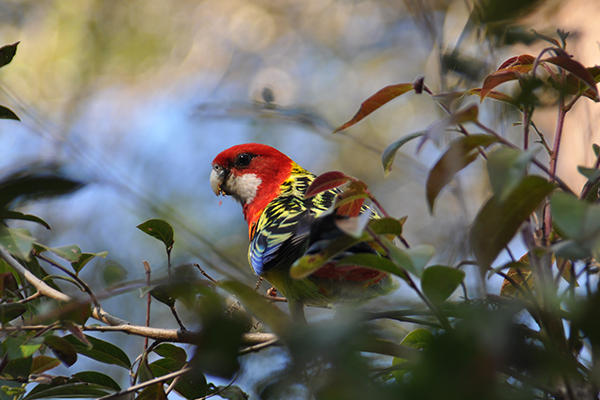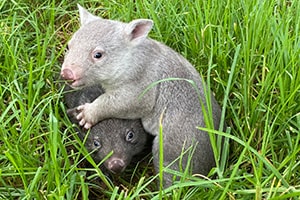Birds
If you find any bird with little or no feathers, that has its eyes closed, is laying down, appears clearly sick or injured, is in immediate danger or has been abandoned by its parents for an extended time (e.g. more than 4 hours) then rescue assistance is required.
For rescue help please call WIRES Rescue Line 1300 094 737 or fill in the Rescue Form.
If you have found a sick or injured bird it will need to see a vet before coming into care. If you are able to safely contain the bird, you can keep it in a quiet, dark, warm place e.g. wrapped in a towel in a ventilated box or carrier with a lid while you transport it to the nearest vet. If you let WIRES know which vet you have taken the bird to, we will follow up with the vet directly to bring them into care after they have been vet assessed and received any necessary treatment.
If you see a sick, injured or orphaned raptor or bird of prey e.g. eagle, owl or hawk, please keep your distance, do not touch it or try to contain it. Please contact immediately WIRES for rescue assistance.
Australia is fortunate to have a large number of native bird species and all native birds are protected. The most commonly rescued native birds include; rainbow lorikeets, magpies, kookaburras, tawny frogmouths, sulphur-crested cockatoos, noisy miners and galahs.
In spring and summer WIRES receive thousands of calls around breeding season. Some young birds like parrots and kookaburras are able to fly directly from the nest. Other birds like magpies, currawongs and noisy miners leave the nest well before they are able to fly upwards. At this critical stage they will commonly be seen on the ground flapping their wings, running and hopping to help develop their flight muscles. This is normal behaviour. The parent birds still keep feeding, protecting and teaching them to forage for food whilst they are on the ground and it can take up to a week for some birds to develop the skill to fly from the ground.
If you find a young bird that looks well feathered and is standing well or behaving as above, please monitor it from a distance for a while to see if the parents are attending. If they are nearby and/or the chick is in no immediate danger there is no need to intervene. If it is too near a road or other danger, you can place the chick in a nearby bush and wait to see if the parents attend to it. You will need to be very patient and monitor it for a couple of hours to see whether the parents are returning to the chick. If they are, then the healthy young should be left with its parents.
Newsletter
Stay in touch with our regular rescue stories and WIRES updates.


